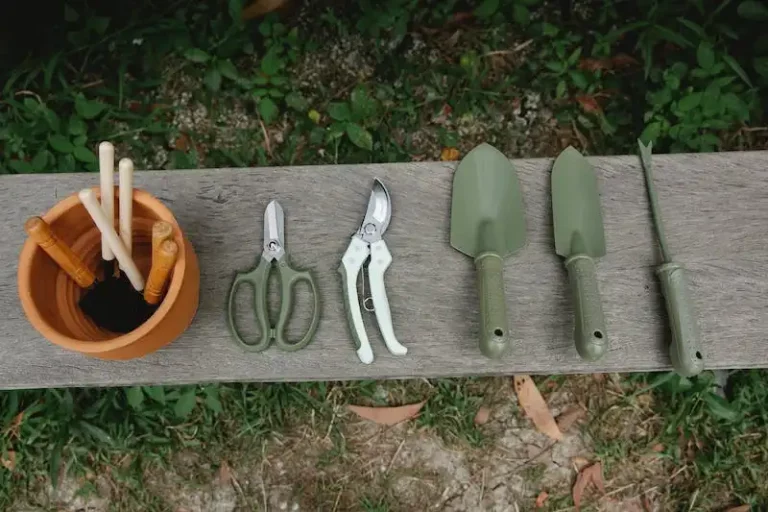The String of Hearts, or Ceropegia woodii, is a popular trailing succulent plant that is native to South Africa, particularly Swaziland. This unique plant is commonly grown as a houseplant, valued for its delicate heart-shaped leaves that trail down long vines, creating a cascading effect. The String of Hearts is an excellent choice for both beginner and experienced plant enthusiasts alike, as it is relatively easy to care for and has a stunning appearance.
To properly care for your String of Hearts, it’s important to provide it with the right conditions. This plant thrives in bright, indirect sunlight, so placing it near a window that receives morning or filtered light is ideal. Avoid exposing it to direct sunlight, as this can cause leaf burn and damage. Additionally, make sure to keep your String of Hearts in well-drained soil, as it prefers not to sit in water for too long.
In terms of watering, the String of Hearts prefers to be slightly dry between waterings. It’s better to underwater than overwater this plant, as it is prone to root rot if kept too wet. You can monitor the moisture level by sticking your finger about an inch into the soil. If it feels dry at that depth, it’s time to water. However, if it still feels slightly moist, you should wait a few more days before watering again.
String of Hearts Care Instructions
String of Hearts (Ceropegia woodii) is a popular trailing succulent vine that is known for its heart-shaped leaves. Taking proper care of this plant will help it thrive and grow healthy. Here are some care instructions for your String of Hearts:
Lighting Conditions: String of Hearts prefers bright, indirect sunlight. Placing it near a window with morning sunlight or providing it with bright artificial lighting helps in its growth.
Watering: String of Hearts is a succulent, so it doesn’t need frequent watering. Overwatering can lead to root rot and other diseases. Allow the top inch of the soil to dry out between waterings, and then water thoroughly, making sure excess water drains out of the pot.
Moisture Level: String of Hearts likes to be kept lightly moist, but not overly wet. It stores water in its leaves, so it can tolerate short periods of drought. Avoid letting the soil become completely dry for a long time.
Fertilizing: String of Hearts benefits from a balanced fertilizer. Fertilize once a month during the growing season (spring and summer) with a diluted liquid fertilizer. Avoid fertilizing during the winter months when the plant is dormant.
Temperature: String of Hearts prefers temperatures between 60-75°F (15-24°C). It can tolerate slightly cooler temperatures, but avoid exposing it to temperature extremes.
Humidity: String of Hearts doesn’t require high humidity levels. It can thrive in average home humidity levels.
Repotting: String of Hearts doesn’t need to be repotted frequently as it likes to be slightly root-bound. Repot it when it outgrows its current pot or when the soil becomes compacted and doesn’t drain well. Use a well-draining potting mix and a pot with drainage holes.
Propagation: String of Hearts can be easily propagated through stem cuttings. Cut a healthy stem just below a node, remove the bottom leaves, and place it in water or soil. Roots will start to grow, and you can then transfer it to a pot or hang it as a cutting.
With proper care and attention, your String of Hearts will be a beautiful addition to your houseplants collection. Enjoy the cascading vines and the unique foliage of this lovely succulent!
String of Hearts Common Symptoms
If you have a String of Hearts (Ceropegia woodii), it’s important to be aware of common symptoms that may indicate issues with the plant’s health. Here are some of the most common symptoms and what they may mean:
- Pale or yellow foliage: If your String of Hearts has pale or yellow leaves, it may be receiving too much sunlight or not enough nutrients. This succulent plant prefers bright but indirect light and a balanced fertilizer. Make sure to place it in a location where it can receive enough light without being exposed to direct sunlight for long periods.
- Dry or crispy leaves: If the leaves of your String of Hearts feel dry or crispy to the touch, it may be a sign that the plant needs more humidity. This plant is native to regions with higher humidity levels, so you may want to increase the humidity around it by misting the leaves or placing a water-filled tray nearby.
- Leggy or sparse growth: If your String of Hearts becomes leggy with long gaps between the leaves, it may be an indication that it needs more light. This plant likes to grow in bright conditions, so ensure it’s placed in a spot where it can receive maximum sunlight.
- No new growth: If your String of Hearts isn’t producing new growth, it may be due to a lack of nutrients. Fertilize the plant with a balanced fertilizer according to the package instructions to provide it with the necessary nutrients for healthy growth.
- Rootbound: If the roots of your String of Hearts start to poke out from the bottom or sides of the planter, it may be rootbound. This means that the plant has outgrown its current container and needs to be transferred to a larger one. Be sure to use well-draining soil to avoid waterlogging the roots.
- Drooping or wilting leaves: If your String of Hearts has drooping or wilting leaves, it may be a sign that the plant is receiving too much water. Allow the top few inches of soil to dry out between waterings, and make sure to water the plant thoroughly but avoid overwatering.
- Purple foliage: If your String of Hearts develops purple foliage, it is likely going through a period of dormancy. This is normal and nothing to be concerned about. During dormancy, reduce watering and provide slightly cooler temperatures to mimic the plant’s natural environment.
By being aware of these common symptoms and their causes, you can ensure that your String of Hearts stays healthy and thrives in your care. Remember to always observe your plant and adjust its care as needed to promote optimal growth and longevity.
String of Hearts Care Instructions
The String of Hearts, also known by its scientific name Ceropegia woodii, is a popular trailing plant in the family of Asclepiadaceae. It is native to South Africa and is often referred to by common names such as Rosary Vine or Sweetheart Vine. This plant is easy to care for, making it an excellent choice for beginner plant enthusiasts.
String of Hearts prefers bright, indirect light but can tolerate some direct sun, especially in the morning or late afternoon. Placing it near an east or south-facing window is ideal. The foliage of the plant can become pale if it receives too much direct sunlight, so it’s essential to monitor the light levels and adjust accordingly.
Proper watering is crucial for the String of Hearts. The plant prefers to be kept on the drier side rather than being overwatered. Allow the soil to dry out between waterings, and ensure that the pot has proper drainage to prevent waterlogging. When watering, it’s best to water thoroughly and let any excess water drain away. The String of Hearts can tolerate short periods of drought and is more likely to suffer if the soil becomes soggy.
Fertilizing the String of Hearts should be done sparingly. A general rule of thumb is to fertilize once a month during the active growing season, which is spring and summer. You can use a balanced houseplant fertilizer or a specialized succulent fertilizer. Always follow the instructions on the fertilizer package and dilute it to half strength to avoid burning the plant’s roots. During the dormant season, which is fall and winter, it’s best to stop fertilizing the plant.
String of Hearts can tolerate a wide range of humidity levels but prefers moderate humidity. If the air becomes too dry, especially during the winter months when central heating is used, you can provide some humidity by placing a tray of water near the plant or using a humidifier. However, ensure that the plant’s leaves do not come into direct contact with the water to prevent root rot.
Repotting should be done every two to three years or when the plant becomes rootbound. Choose a well-drained potting mix that is specifically formulated for succulents or cacti. The String of Hearts has delicate roots, so it’s essential to be gentle while repotting. During the repotting process, you can trim any leggy or yellowing stems to encourage fuller growth and a bushier appearance.
The String of Hearts is relatively pest-resistant, but occasionally, it can be vulnerable to spider mites. If you notice any webbing, tiny dots on the leaves, or the leaves appearing pale and yellow, it may be a sign of a spider mite infestation. You can try wiping the leaves with a damp cloth or using an insecticidal soap to get rid of these pests.
In summary, taking care of the String of Hearts involves providing it with bright, indirect light, watering it sparingly, and fertilizing it regularly during the active growing season. Monitoring humidity levels and repotting when necessary will also ensure the plant’s overall health and longevity. By following these care instructions, you can enjoy the beauty of this charming trailing vine in your home or office.
Contact us
If you have any questions or concerns about caring for your String of Hearts Ceropegia woodii, don’t hesitate to contact us. We are here to ensure that you have all the information you need to keep your plant healthy and thriving.
If you notice any issues with your plant, such as yellowing leaves or wilting, let us know. We can advise you on how to address these problems and prevent further damage. Remember, it’s often better to ask for help sooner rather than later.
We recommend checking your String of Hearts regularly for signs of underwatering or overwatering. The plant prefers to dry out between waterings, so make sure the top inch of soil is dry before watering again. Be careful not to overwater, as too much moisture can lead to root rot.
String of Hearts is generally a low-maintenance plant with few pest problems. However, if you notice any pests such as aphids or mealybugs, let us know. We can tell you how to safely remove them and prevent further infestation.
If your String of Hearts has become leggy, it may require repotting. We can guide you on how to properly repot the plant to promote healthier growth and fuller foliage.
String of Hearts thrives in bright, indirect light. Make sure it receives at least four hours of bright, indirect sunlight each day. If you notice the plant turning pale or the leaves losing their vibrant color, it may not be getting enough light.
String of Hearts prefers temperatures between 60-85°F (15-29°C). Keep it away from drafts or extreme temperatures, as this can stress the plant and lead to damage.
If you have any questions about the specific care requirements of String of Hearts, be sure to ask. We can provide an overview of its water, light, and humidity needs, as well as any specific fertilizing or pruning requirements.
To ensure that your String of Hearts remains healthy, it’s a good idea to periodically check for dust or dirt on the leaves. Gently wipe them with a damp cloth to keep them clean and free from pests or diseases.
If you have pets, keep in mind that String of Hearts is toxic to dogs and cats if ingested. Make sure to keep it out of reach of your furry friends.
Again, if you have any questions or concerns about the care of your String of Hearts, feel free to reach out to us. We’re here to help you and your plant thrive!

